Category Archives: Survey translation and localisation
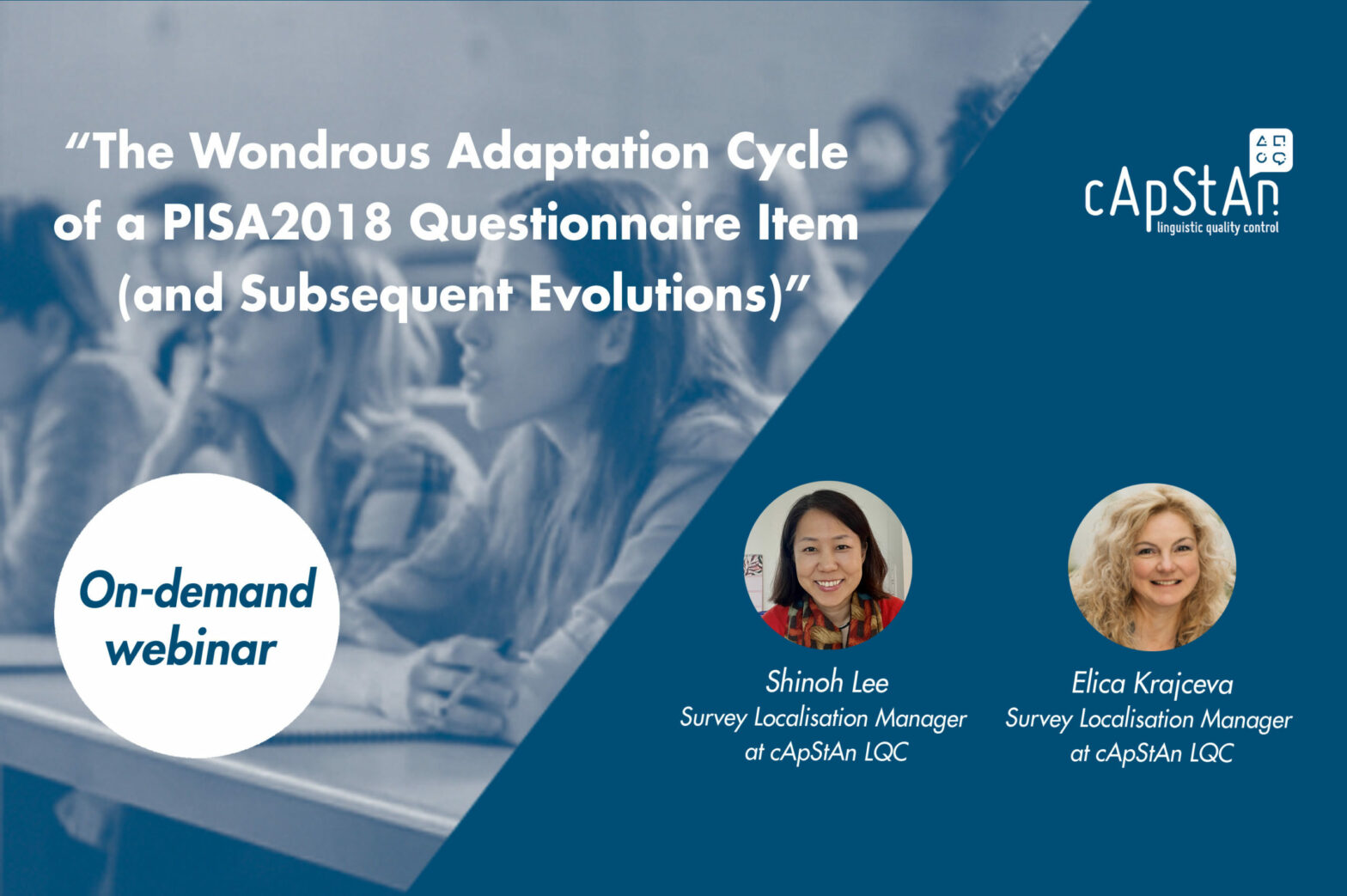
The Wondrous Adaptation Cycle of a PISA2018 Questionnaire Item (and Subsequent Evolutions)
The Wondrous Adaptation Cycle of a PISA2018 Questionnaire Item (and Subsequent Evolutions) Speaker: Shinoh Lee, Survey Localisation Manager at cApStAn LQC Contributor: Elica Krajçeva, Survey Localisation Manager at cApStAn LQC Recorded on 09.03.2021 | Duration: 20 minutes Sophisticated translation designs have become the norm in high-stakes tests and are essential in order to collect comparable …
“The Wondrous Adaptation Cycle of a PISA2018 Questionnaire Item (and Subsequent Evolutions)”
Read More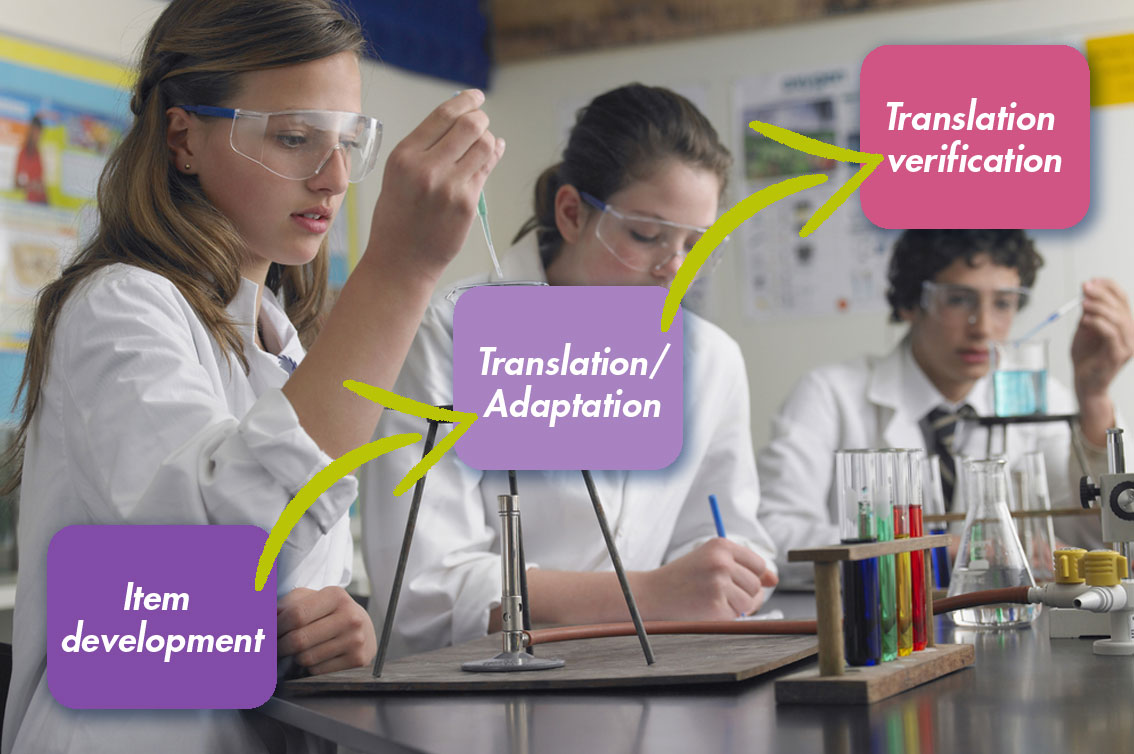
The translation and adaptation journey of a TIMSS grade 8 science item
by Pisana Ferrari – cApStAn Ambassador to the Global Village The IEA’s Trends in International Mathematics and Science Study (TIMSS) is a series of international assessments of the mathematics and science knowledge of students around the world, administered every four years. TIMSS 2019 was conducted in 64 countries and 8 benchmarking systems. The outcomes of …
“The translation and adaptation journey of a TIMSS grade 8 science item”
Read More
What are “intervention categories” and how can revisers use them to improve translation quality?
by Pisana Ferrari – cApStAn Ambassador to the Global Village How do you define “translation quality”? How can it be measured? In a recent live webinar cApStAn’s CEO Steve Dept explained how “intervention categories” used in a translation verification process can help report on translation quality in a standardized way and generate meaningful statistics. Translation …
“What are “intervention categories” and how can revisers use them to improve translation quality?”
Read More
Trend Measurement in International Assessment Surveys
by Andrea Ferrari – Senior Associate In international surveys in general and in comparative assessments in particular, investigators are interested in collecting data about knowledge, skills and competences of a given population at a given point in time. In addition, if periodical data collections are planned, it is of great interest to also measure change …
“Trend Measurement in International Assessment Surveys”
Read More
The Economic Migration Barometer Series: A Survey Translation Case Study Episode 4 – Linguistic Quality Assurance and Optical Check
by Steve Dept, cApStAn CEO Readers of this informative series on good practice in survey translation are aware that the Economic Migration Barometer is a fictitious project, which we set up for the exclusive purpose of the series. The purpose is to illustrate the complexity of survey translation and the added value of a robust …
Read More
The Economic Migration Barometer Series: A Survey Translation Case Study Episode 3 – Translation Technology and Support to translators
by Steve Dept, cApStAn CEO By now, readers of this informative series on good practice in survey translation are aware that the Economic Migration Barometer is a fictitious project, which we set up for the exclusive purpose of the series. The purpose is to illustrate the complexity of survey translation and the added value of …
Read More
The Economic Migration Barometer Series: A survey adaptation Case Study Episode 2 – Translatability Assessment and Q-by-Q Translation and Adaptation Notes
by Steve Dept, cApStAn CEO By now, readers of this informative series on good practice in Economic Migration survey adaptation and translation are aware that the Economic Migration Barometer is a fictitious project, which we set up for the exclusive purpose of the series. The purpose is to illustrate the complexity of survey translation and …
Read More
The Economic Migration Barometer Series: A multilingual survey translation Case Study Episode 1 – Retrieving and leveraging existing translations
by Steve Dept, cApStAn CEO Please don’t spend too much time looking up the Economic Migration Barometer. It is a fictitious project, which we set up for the exclusive purpose of this informative series on good practice in multilingual survey translation. We have collated events and features from several multilingual surveys on which we have …
Read More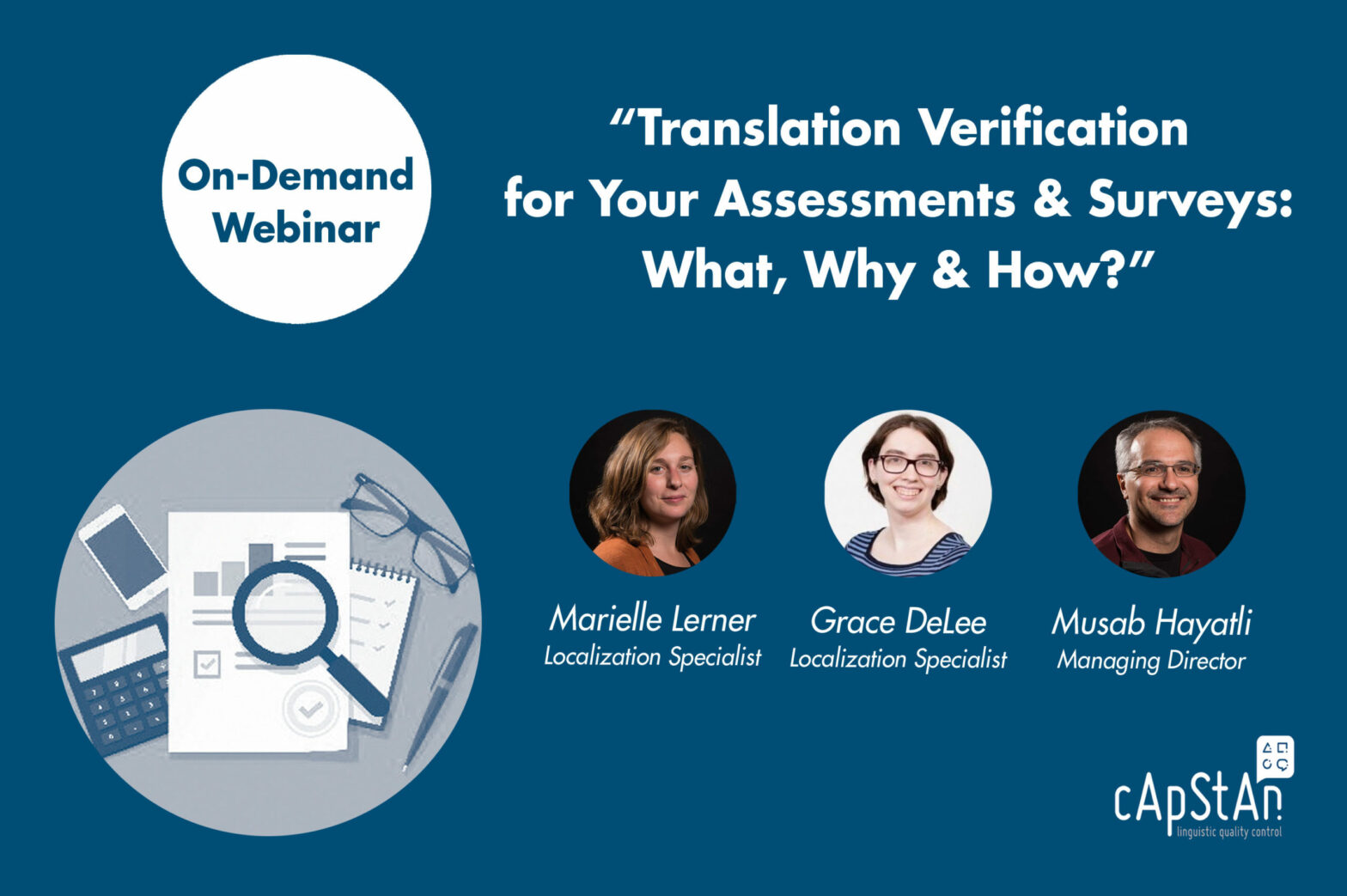
On-Demand Webinar | Translation Verification for Your Assessments & Surveys: What, Why & How?
Translation Verification for Your Assessments & Surveys: What, Why & How? Speakers – Marielle Lerner, Localization Specialist | Grace DeLee, Localization Specialist | Musab Hayatli, MD-Americas Recorded on July 22, 2020 | Duration: 45 minutes At a previous webinar we discussed the pros and cons of using back-translation to evaluate the quality of your translated tests and questionnaires. We also introduced …
“On-Demand Webinar | Translation Verification for Your Assessments & Surveys: What, Why & How?”
Read More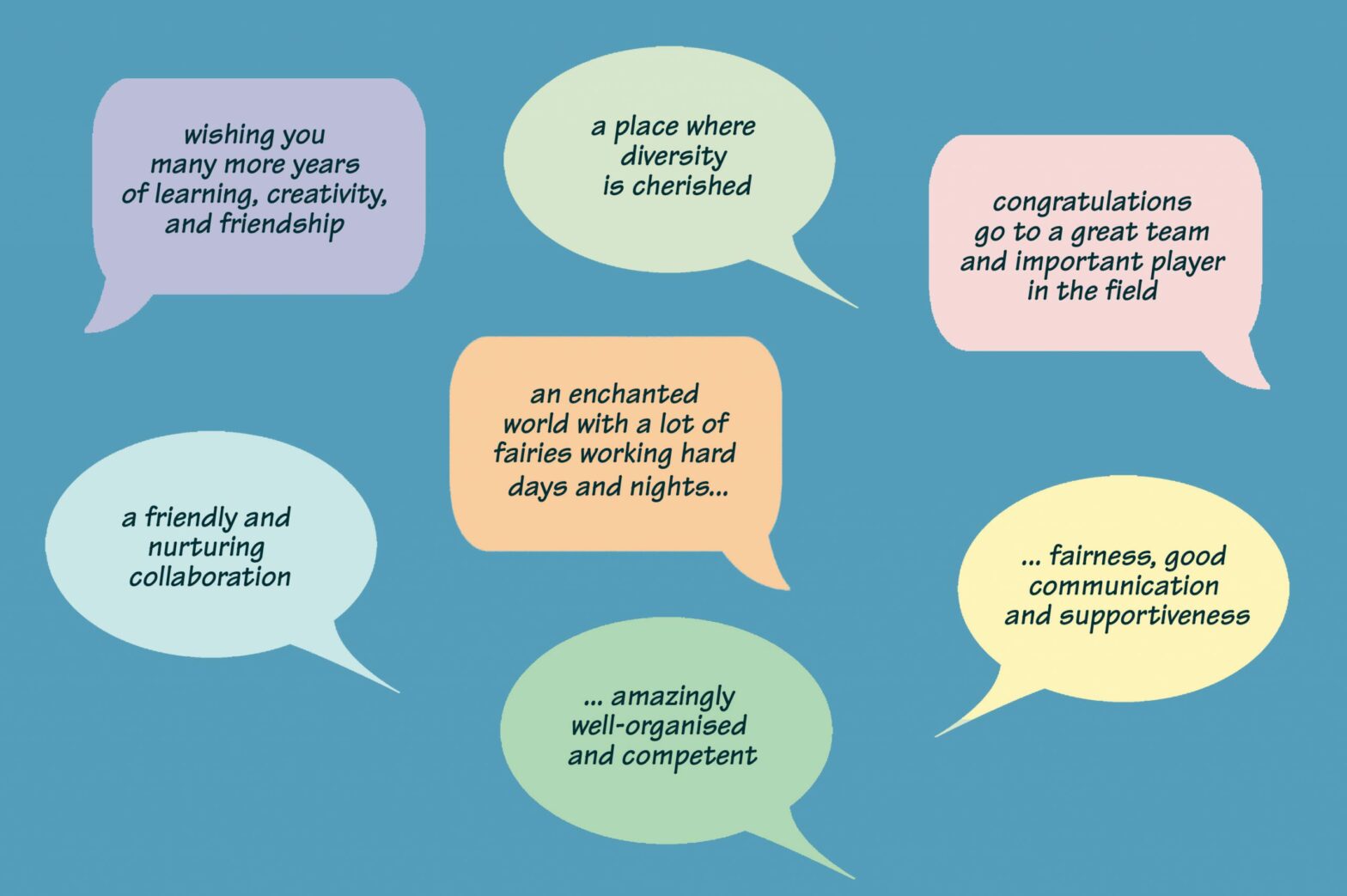
2000-2020. What they say about cApStAn
cApStAn Linguistic Quality Control is the language service provider with a holistic approach to translation and adaptation of multilingual assessments and surveys. cApStAn also stands for a certain lifestyle and spirit: “excellence among friends”, as one of the founding partners likes to put it. Over the past 20 years we have had the privilege of …
“2000-2020. What they say about cApStAn”
Read More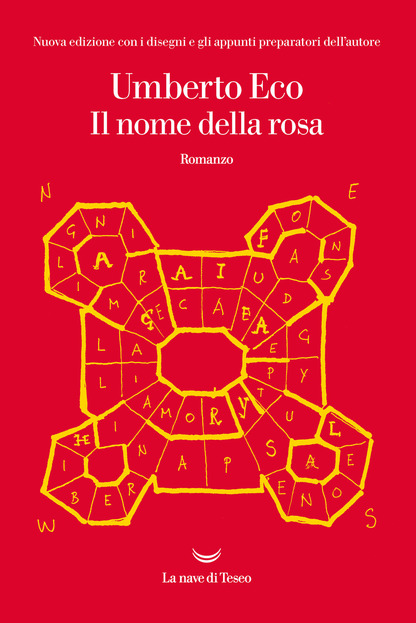
Translating “The name of the Rose”, an example of a linguistic quality assurance process applied to literature
by Pisana Ferrari – cApStAn Ambassador to the Global Village In 1983 Italian academic, historian, semiologist, journalist and author Umberto Eco published his first novel, Il nome della rosa (The name of the rose). The book became a literary event almost overnight and was on the best-seller list practically everywhere for months. It was translated …
Read More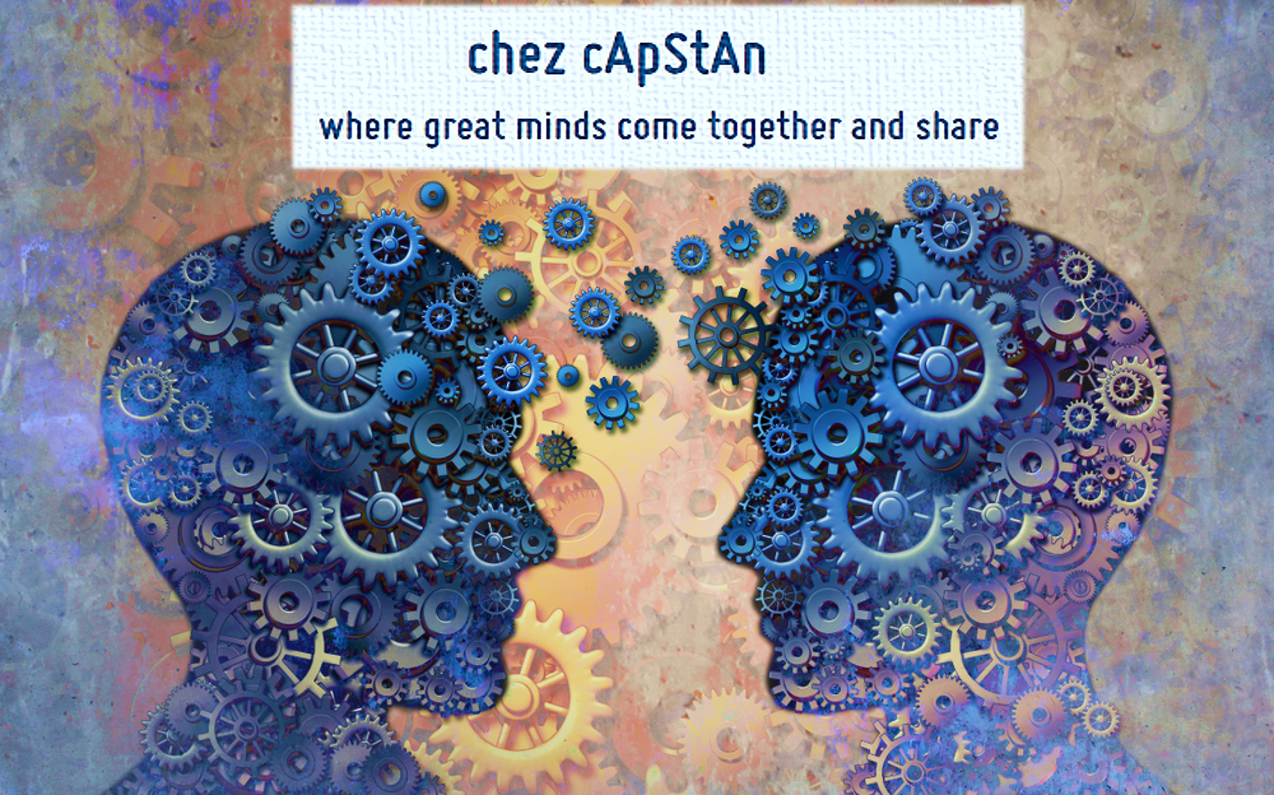
Chez cApStAn — where great minds come together and share
by Steve Dept, cApStAn CEO When I used to run a small translation agency in the nineties, the majority of my clients were universities. Researchers wrote papers, reports and questionnaires (in elegant French, accurate German, factual Dutch or in rather poor English) and needed them translated. They received documents relevant to their work, written in …
“Chez cApStAn — where great minds come together and share”
Read More